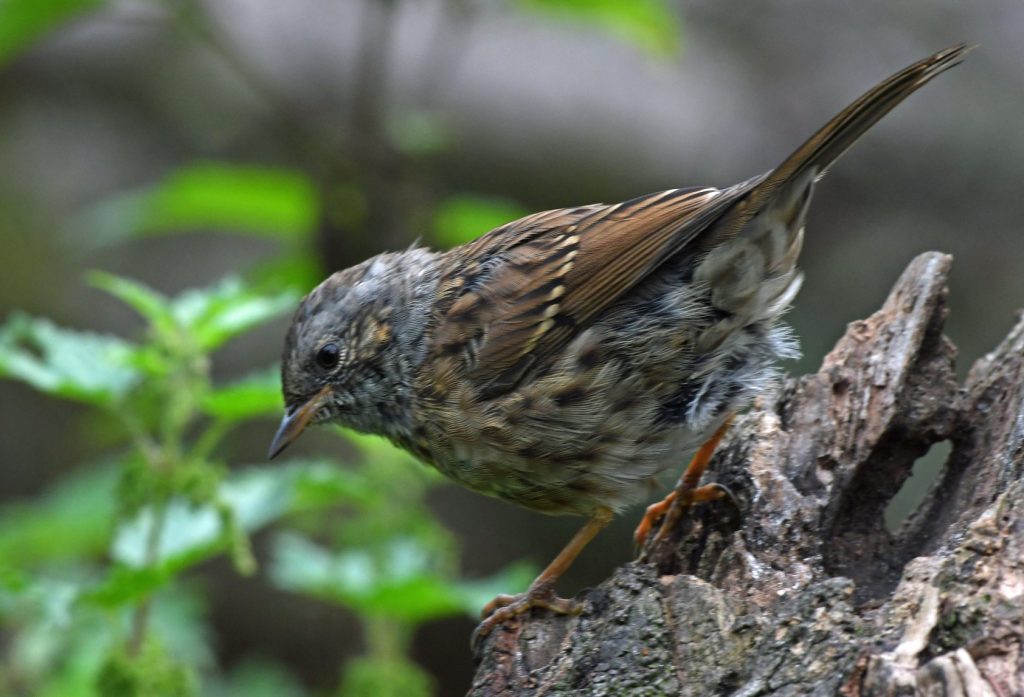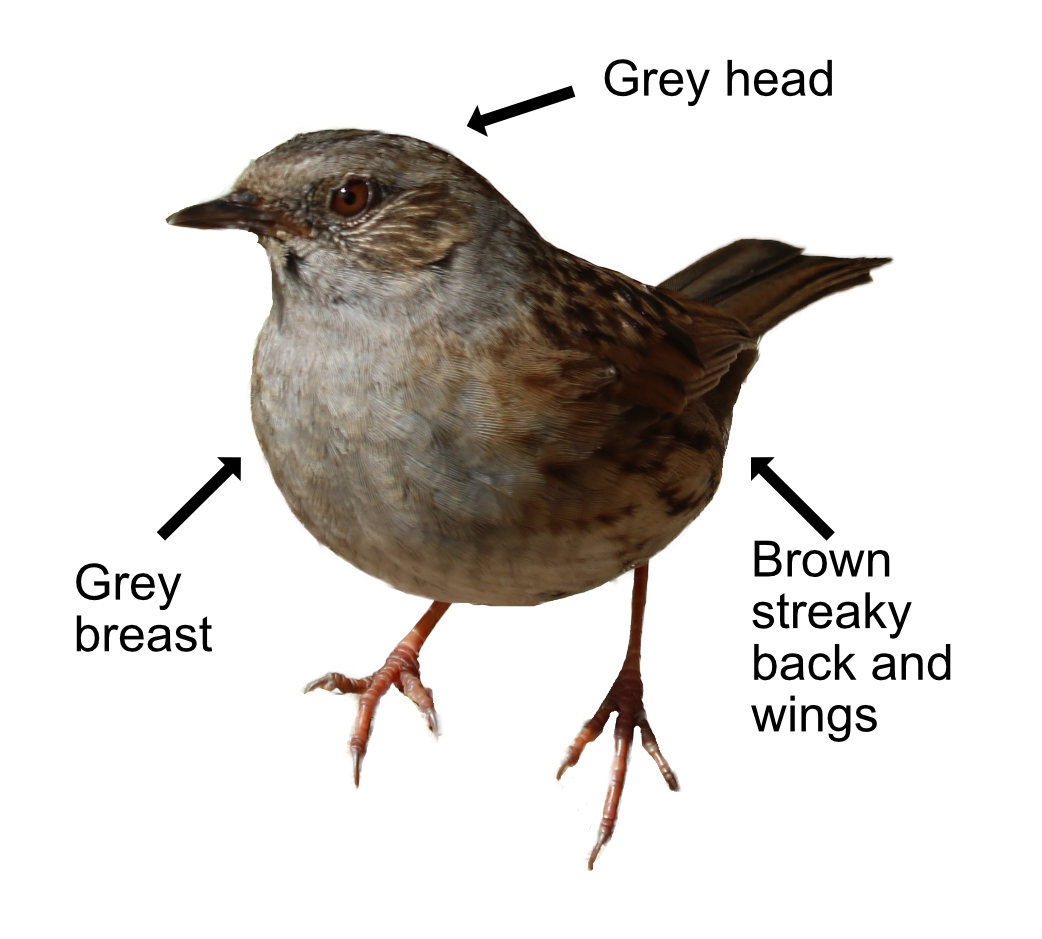
Often called a 'hedge sparrow', the Dunnock is not in the sparrow family at all. They have a blue-grey head and breast, rich brown upper parts and a streaky back, wings, and sides. Their Latin name 'prunella modularis' roughly translates as 'singing little plum' which is quite sweet but nowhere near what these little fellows are actually like. The Dunnock creeps, mouse-like, on the ground, giving a nervous flick of its wings. The wing flicking is what it is all about, like the flicking of the fringe by a male super model. Dunnocks are mad for sex, and multiple infidelities and deceptions mark their steamy lives. Some males have two females, some females two males, and even groups of males share several females. The hedges of Britain are a hotbed of Dunnock passion!
The Dunnock's song is a squeaky ditty with a series of trills and warbles ending with a phrase that often sounds like "Who are you looking at?" which is what they would say, being so vain. They tend to sing in the morning, having a good vocal stretch before the serious business of chasing the ladies.

Dunnocks eat insects, seeds and berries, mainly from the ground, while creeping around under the hedges. This is why you will often see them picking up seeds from beneath the garden feeder rather than on it.
They build a cup-shaped nest out of roots, leaves, and grasses. Up to 6 eggs are laid which hatch after 12 days. Despite all the different free-love arrangements, they all stay together to help raise the young (as nobody is quite sure which chick is whose). The young can fly after 11 days. There are often three broods as it is easy with all that help.
The Dunnock is pretty sedentary with about 2 million birds in the British Isles. They are not too fussy where they live and will happily occupy a bramble patch if nothing else is going. Who cares where you live providing there is 'lurve'?